Search
Search Results
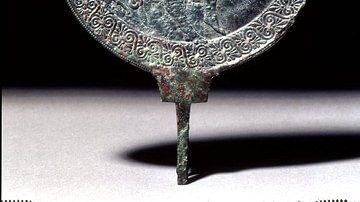
Article
Etruscan Bronze Mirrors
The Etruscan civilization flourished in central Italy between the 8th and 3rd century BCE and produced distinctive art in the form of decorated pottery, figure sculpture, wall paintings, and the focus of this article, engraved bronze mirrors...
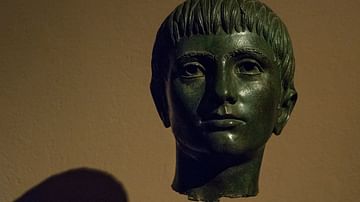
Article
Etruscan Bronze Sculpture
The Etruscans produced bronze goods going back to the Villanovan period (1100-750 BCE) and used the material for all manner of objects, but it is their figure sculptures which have become some of the star attractions in museums worldwide...
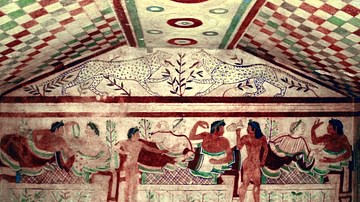
Article
Etruscan Banquets
The Etruscans, who flourished in central Italy between the 8th and 3rd century BCE, were noted in antiquity for their sumptuous banquets, drinking parties, and general easy-living. Although such pleasures were probably restricted to the wealthy...
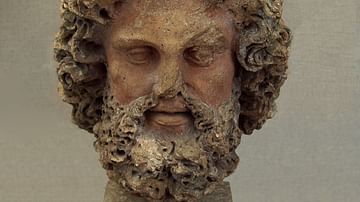
Article
Etruscan Pantheon
The religion of the Etruscans included a myriad of gods, goddesses, and minor divine beings, some of which were indigenous and some were imported, especially from Greece, and then given their own particular Etruscan attributes and myths...
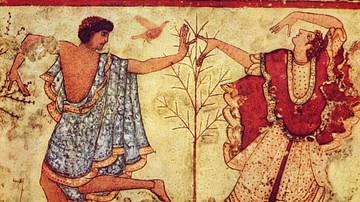
Article
Etruscan Clothing
The clothing of the ancient Etruscans, a civilization which flourished in central Italy between the 8th and 3rd century BCE, can be seen in many media of their art including wall paintings, bronze sculpture, stone relief carvings, and painted...
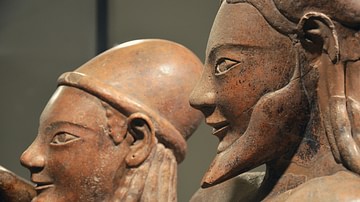
Image
Etruscan Sarcophagus of the Spouses (detail)
Detail of the Etruscan Sarcophagus of the Spouses, considered one of the great masterpieces of Etruscan art. It is a late 6th century BCE Etruscan anthropoid sarcophagus made of terracotta. It depicts a married couple reclining at a banquet...
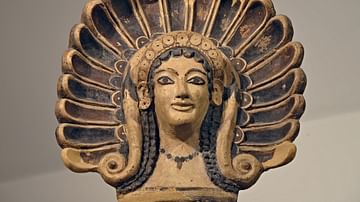
Image
Etruscan Maenad Roof Tile
A decorative end roof tile in the form of a maenad from the Etruscan Portonaccio Temple at Veii, central Italy. 510 BCE. (National Etruscan Museum of Villa Giulia, Rome)
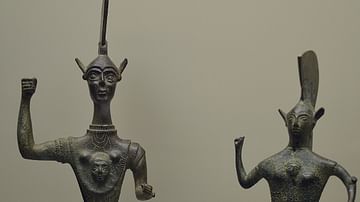
Image
Etruscan Votive Statuettes of Menerva (Athena)
Two Etruscan votive bronze statuettes of Menerva the warrior (Athena) wearing a high-crested Attic helmet and a cuirass with the gorgoneion, 450-400 BCE. (National Etruscan Museum of Villa Giulia, Rome)
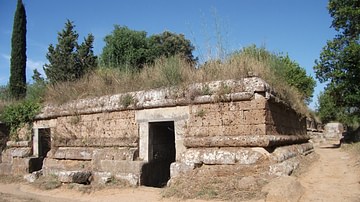
Definition
Cerveteri
Cerveteri (Etruscan name: Cisra or Caisra, Greek: Agylla, Roman: Caere) was an important Etruscan town which flourished between the 7th and 4th century BCE. Located near the western coast of central Italy, around 50 km north of Rome, Cerveteri...
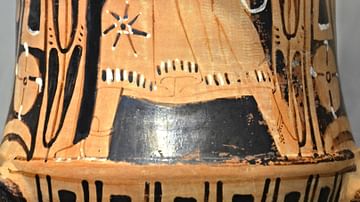
Image
Etruscan Red-Figure Krater with Charun
The Etruscan death demon Charun escorts the deceased to the Underworld. He is characterised by a heavy hammer and a hooked nose. From Vulci (Italy). Around 300 BCE. (Altes Museum, Berlin)